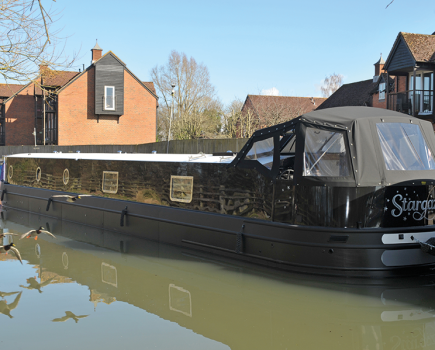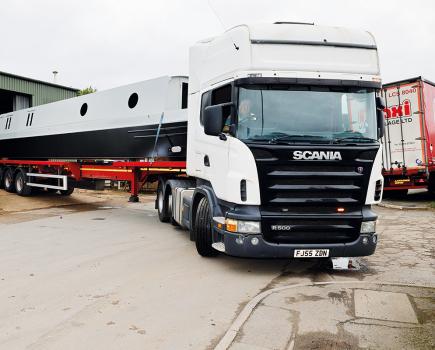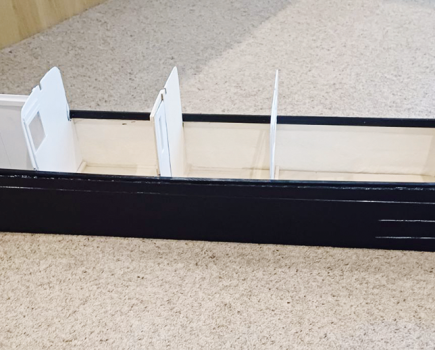Our network of over 2,000 miles of navigable waterways boasts an incredible heritage dating back to when the canals played a huge part in the day-to-day life of industrial Britain. Sadly, much of this architectural ingenuity, tradition and history lay forgotten as trade declined and many of the historic waterways fell into disrepair. But with the revival of the canals, they began to be appreciated as a national treasure to be cherished and conserved rather than neglected – and many of the formerly overlooked features have been restored from dereliction. This week we focus on the Inclined Plane in the small village of Foxton, located on the Grand union canal in Leicestershire.

The incline was conceived in the late 19th Century to help the important East Midlands to London route (operated at that time by the Grand Junction Canal Company) to compete against the rapidly developing railways. They were steadily taking trade away from the canals and many were struggling to survive. The incline saved a tremendous amount of water and introduced the use of much larger craft. Passing a pair of boats through the lift took just a fraction of the time taken to pass the ten locks; unlike the locks it wouldn’t take any water from a summit level which wasn’t particularly well supplied. Despite this, traffic to the lift just didn’t materialise, and when this was combined with the cost of keeping a head of steam (just in case boats did appear) it became uneconomical.
Eventually in an effort to cut costs the lift was mothballed and gradually deteriorated. By the time the Foxton Inclined Plane Trust (FIPT) was formed it was too late. The machinery had been sold off for scrap, the buildings demolished and the plane itself almost completely obscured by undergrowth. It was a very sad retirement of something that had once showed such promise. Fortunately, that didn’t stop the Trust, and despite limited resources, they (very slowly) set to work on restoration.
Vegetation was cleared, and the boiler house – much of which had been demolished – was rebuilt. This not only acted as a headquarters for FIPT but also served as a Museum where surviving relics and old photographs helped the site transform into a local tourist attraction. The Trust was picking up steam (no pun intended) and suddenly their goal of restoring the lift did not appear so far-fetched. In the late 1990s and early 2000s other organisations began taking an interest, and after generous funding from the Heritage Lottery Fund and local authorities rebuilding began. Work carried out by contractors included:
• Re-watering the upper approach channel to the inclined plane – including embankment stabilisation involving steel piles and modern channel lining materials
• Dredging the lower approach channel and rebuilding the wooden landing stages
• Reinstating the missing swingbridge which carried the towpath across the Market Harborough Arm below the locks
• Restoring and converting the top lock cottage into a visitor centre and refreshments facility
• Improving access paths, signage and interpretation around the site
• Building a public viewing platform and bridge at the top of the incline
Despite this, in January 2014 the Trust was forced to abandon their campaign, with President of the Trust David Stephenson saying at the time: “We have estimated the rebuilding cost would be in excess of £11 million and we believe it unlikely that the Heritage Lottery Fund would give financial support to the lift replication project”. However, all was not lost – technology was infinitely more advanced since the bridge was built – and it appeared that the digital age offered a unique solution.
In 2015, thanks to support of the Trust partners and a generous grant from the Arts Council – the museum was transformed. The BoilerHouse as it is now called, retains its museum accreditation and allows guests to explore the history of the locks and the lift in exciting new and innovative ways. The new ‘digital boat lift’ brings the lift to life in virtual reality using an app on your smart-phone or tablet. It’s true that virtual reality is not the same as the real thing, however, this is an excellent example of how new technologies can be used to support and preserve the heritage of our waterways that are so close to being lost forever.
The Foxton Inclined Plane will likely never rise again in its physical form. But because of our technological advancements part of it will survive forever, untarnished by time and weather for generations to enjoy.
If you plan on visiting the Foxton Inclined Plane in the near future, then check out this great pub guide for the Grand Union Canal and make a day of it!
Image(s) provided by:
Archant







